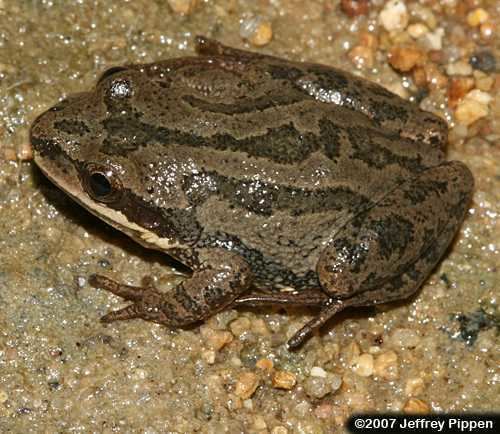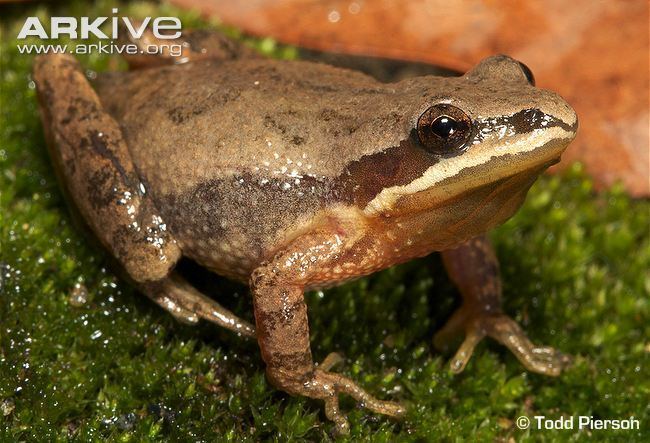Order Anura Genus Pseudacris Higher classification Chorus frog | Phylum Chordata Scientific name Pseudacris feriarum Rank Species | |
 | ||
Similar Chorus frog, Frog, Amphibians, Mountain chorus frog, Southern chorus frog | ||
Upland chorus frog
The upland chorus frog (Pseudacris feriarum) is a species of chorus frog found in the United States. It was recently separated from the Western chorus frog, (Pseudacris triseriata), being identified as an individual species rather than a subspecies.
Contents
- Upland chorus frog
- Thesuperherper upland chorus frog
- Description
- Geographic distribution
- Behavior
- Conservation status
- References

Thesuperherper upland chorus frog
Description

Upland chorus frogs are usually brown, grey-brown, or reddish-brown in color, with darker blotching. They grow from 0.75–1.5 inches (1.9–3.8 cm) in size.
Geographic distribution

Found in the southern and eastern United States, the upland chorus frog is found from the state of New Jersey to the Florida panhandle; west to eastern Texas and southeast Oklahoma.
Behavior

Upland chorus frogs are secretive, nocturnal frogs, and are rarely seen (or heard) except immediately after rains. They are an almost entirely terrestrial species, and found in a variety of habitats, but usually moderately moist, vegetated areas, not far from a permanent water source. Like most frogs, they are insectivorous. Breeding occurs throughout the year, but most frequently during the cooler, more rainy periods from November to March. Eggs are laid in clusters of 60 or so, in water and attached to vegetation. The female can lay upwards of 1,000 eggs at a time.
Conservation status
The upland chorus frog is listed as a protected species in the state of New Jersey, primarily due to habitat destruction. Because of its restrictive habitat preferences, this species is declining in several states, particularly in areas where roadside ditches and other ephemeral pools are being drained or destroyed for new developments.
